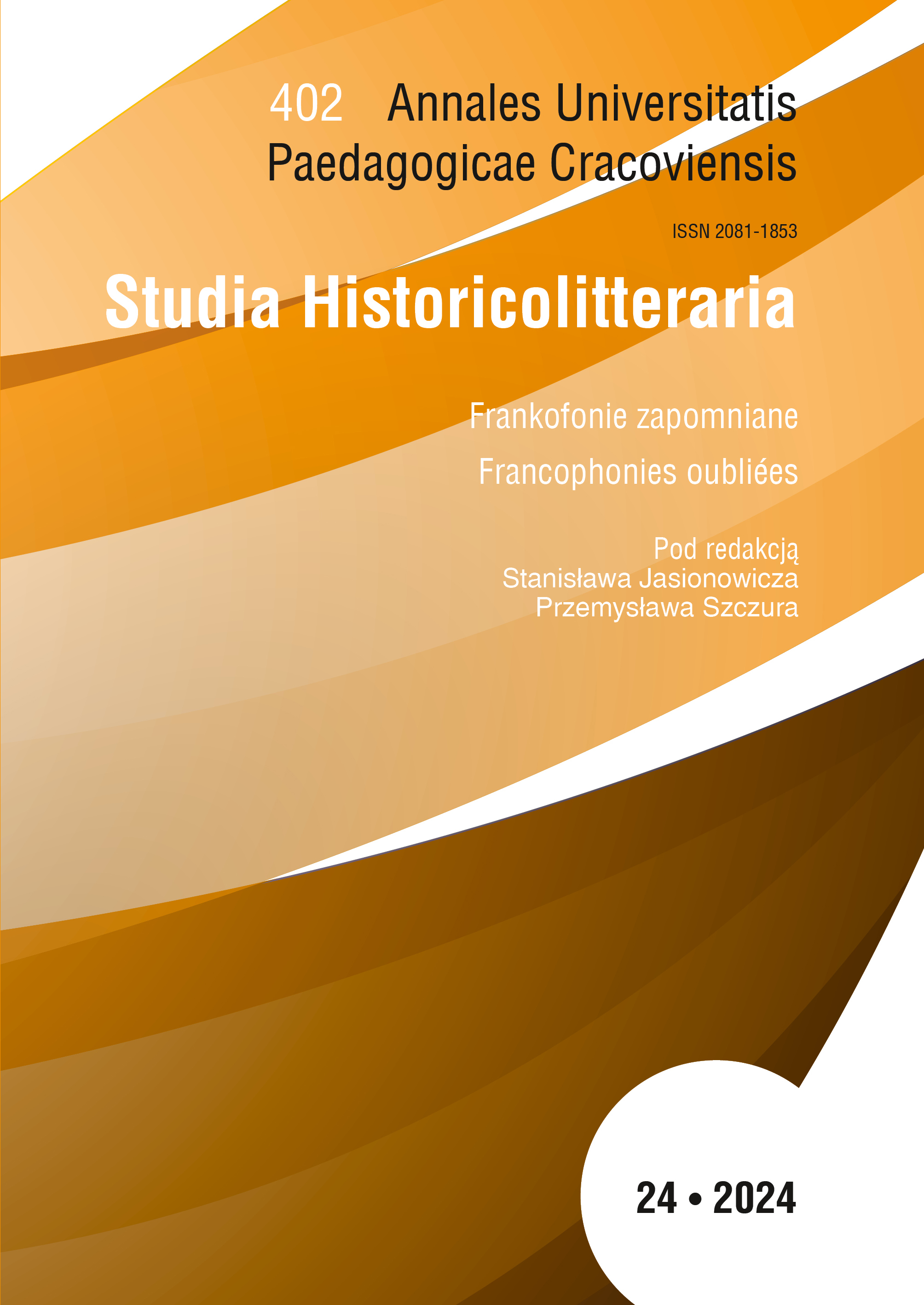Filiation and generation in 'A Hundred Thousand Billion Poems'
Main Article Content
Abstract
'Queneau’s AHundred Thousand Billion Poems' has often been reduced to its technical and formalist character because of the almost infinite combinations of lines that make it up. This characteristic has fascinated readers of this extraordinary collection. The aim here is to take their content seriously, basing essentially on the ten “parent sonnets”, which will be read semantically in order to highlight their depth. The theme that interests us is filiation, and we will relate the problem to the form.
Downloads
Article Details

This work is licensed under a Creative Commons Attribution-NonCommercial-NoDerivatives 4.0 International License.
COPYRIGHT POLICY
The publisher of "Annales Universitatis Paedagogicae Cracoviensis.Studia Historicolitteraria" is authorised to use and distribute all the materials published in the journal on the basis of a non-exclusive licence agreement unlimited in time – previously concluded for an indefinite period of time each time with the author of a specific paper in the fields of exploitation specified in the agreement.
OPEN ACCESS POLICY
"Annales Universitatis Paedagogicae Cracoviensis.Studia Historicolitteraria” is an open access journal, and all its contents are available for free to users and/or their institutions on the basis of non-exclusive licenses under Creative Commons (CC BY CC-BY-4.0). Users can read, download, make copies, distribute, print, search, or to link to full text articles in this journal without the prior permission of the publisher or the author.This is consistent with the definition of open access BOAI (http://www.soros.org/openaccess).
References
Audin M., Trente-six indications pour une biographie de Raymond Queneau, [dans:] « Cahiers Raymond Queneau » 2011, n° 1, p. 38–39.
Barthes R., La Mort de l’auteur [1968], [dans:] idem, Œuvres complètes III, 1968–1971, Paris 2002, p. 40–45.
Bayard P., Enquête sur Hamlet. Le Dialogue de sourds, Paris 2002.
Bragard J.-M. et Kayser R., La Première Machine à lire les Cent mille milliards de poèmes. Un véritable jackpot littéraire!, Liège1994.
Debon Cl., Notice, [dans:] R. Queneau, Œuvres complètes I, Paris 1989, p. 1315–1319.
Le Lionnais Fr., Raymond Queneau et l’amalgame des mathématiques et de la littérature, [dans:] Oulipo, Atlas de littérature potentielle, Paris 1988, p. 34–41.
Pestureau G., Cent mille milliards de bretzels dans la biosphère ou « grignoter des bretzels distrait bien des colloques », [dans:] « Temps mêlés. Documents Queneau » 1985, n°150, p. 40–53.
Proust M., réponse à M. Henriot, Enquête sur le romantisme et le classicisme [1921], [dans:] M. Proust, Essais, Paris 2022, p. 1263–1265.
Queneau R., Cent mille milliards de poèmes [1961], [dans:] idem, Œuvres complètes I, Paris 1989, p. 331–347.
Queneau R., Chêne et Chien. Roman en vers [1937], [dans:] idem, Œuvres complètes I, Paris 1989, p. 5–32.
Queneau R., Mode d’emploi des Cent mille milliards de poèmes [1961], [dans:] idem, Œuvres complètes I, Paris 1989, p. 331–333.
Queneau R., Qui cause ? Qui dose ? Qui ose ?, [dans :] idem, Œuvres complètes I, Paris 1989, p. 301–302.
Queneau R., Qu’est-ce que l’art ? [1938], [dans:] idem, Le Voyage en Grèce, Paris 1973, p. 89–96.
Queneau R., [Souvenirs d’enfance] [vers 1939–1945], [dans:] idem, Œuvres complètes I, Paris 1989, p. 1071–1077.
Roubaud J., La Mathématique dans la méthode de Raymond Queneau, [dans:] Oulipo, Atlas de littérature potentielle, Paris 1988, p. 42–72.
